
Hypena is a genus of moths in the family Erebidae. It was first described by Franz von Paula Schrank in 1802. These non-migratory moths overwinter as pupae and almost never come to bait as adults.
The Hilo noctuid moth was a moth in the family Erebidae. The species was first described by Otto Herman Swezey in 1912. It was endemic to the island of Hawaii and is now extinct.

Hypena proboscidalis, the snout, is a moth of the family Erebidae. The species was first described by Carl Linnaeus in his 1758 10th edition of Systema Naturae.
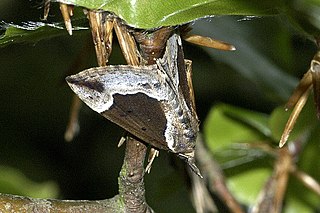
Hypena crassalis, the beautiful snout, is a moth of the family Erebidae. The species was first described by Johan Christian Fabricius in 1787. It is found in Europe.

Itmaharela is a genus of moths of the family Noctuidae.

Dichromia is a genus of moths of the family Erebidae first described by Achille Guenée in 1854.

Hypena baltimoralis, the Baltimore bomolocha or Baltimore hypena, is a moth of the family Erebidae. The species was first described by Achille Guenée in 1854. It is found in the eastern part of the United States, west and south to Wisconsin, Missouri and Florida and Texas.
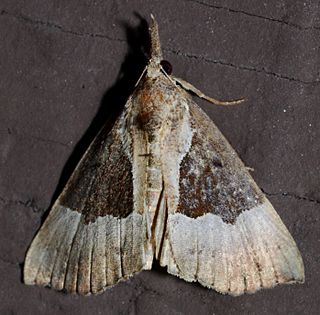
Hypena bijugalis, the dimorphic bomolocha, dimorphic hypena or toothed snout-moth, is a moth of the family Erebidae. The species was first described by Francis Walker in 1859. It is found in North America from Nova Scotia across southern Canada to Vancouver Island, south over the whole United States to Florida.
Hypena edictalis, the large bomolocha, is a moth of the family Erebidae. The species was first described by Francis Walker in 1859. It is found in North America from Quebec and Maine south to Virginia and Kentucky, west to the foothills of Alberta and the Peace River area of British Columbia.
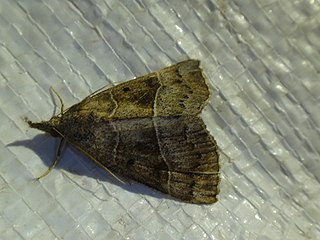
Hypena deceptalis, the deceptive hypena or deceptive bomolocha moth, is a moth of the family Erebidae. The species was first described by Francis Walker in 1859. It is found in North America from Manitoba to Quebec, south to Florida and Texas. It is absent from much of Gulf Coastal Plain though.

Hypena abalienalis, the white-lined hypena or white-lined bomolocha moth, is a moth of the family Erebidae. The species was first described by Francis Walker in 1859. It is found from southern Canada to northern Florida and Texas.
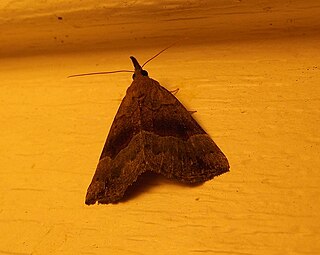
Hypena madefactalis, the gray-edged hypena or gray-eyed bomolocha, is a moth of the family Erebidae. The species was first described by Achille Guenée in 1854. It is found from extreme southern Canada (Quebec) to Georgia and Texas.
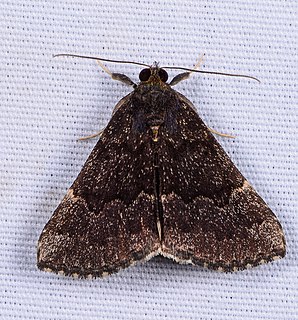
Hypena sordidula, the sordid hypena or sordid bomolocha moth, is a moth of the family Erebidae. The species was first described by Augustus Radcliffe Grote in 1872. It is found in North America from Quebec and Maine south to northern Florida and Texas, west to Louisiana and Kansas, north to Manitoba.
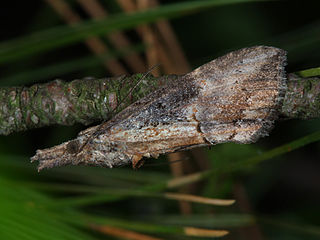
Hypena scabra, the green cloverworm or black snout, is a moth of the family Erebidae. The species was first described by Johan Christian Fabricius in 1798. It is found in North America from Canada south to Florida and Texas. It has also been reported from Great Britain.

Hypena perspicua is a moth in the family Erebidae first described by John Henry Leech in 1900. It is found in Taiwan.

Hypena tenebralis is a moth in the family Erebidae first described by Frederic Moore in 1867. It is found in Taiwan.
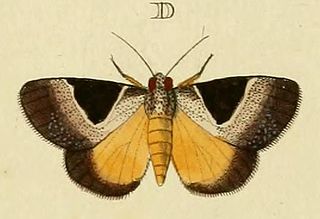
Dichromia sagitta is a moth of the family Erebidae first described by Johan Christian Fabricius in 1775. It is found in India, Macau, Hong Kong, Japan and Taiwan.

Hypena denticulata is a moth of the family Erebidae first described by Frederic Moore in 1882. It is found in Darjeeling, India.
Dichromia occatus is a moth of the family Erebidae first described by Frederic Moore in 1882. It is found in the Indian subregion, Sri Lanka, Taiwan, Japan, Korea, Laos, Borneo, the Philippines, Sulawesi, Java and Bali.
















